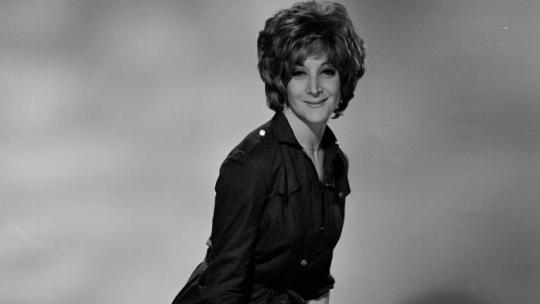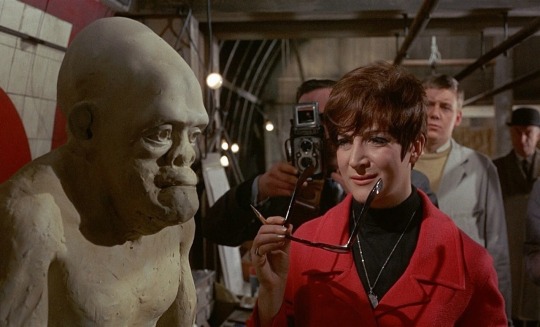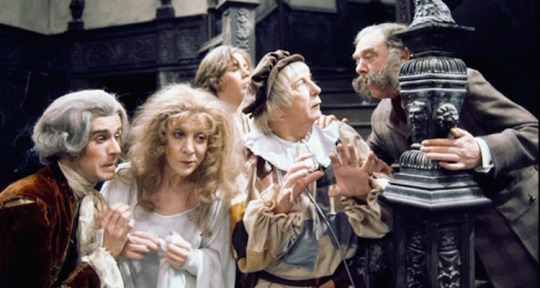#books by peter gudgin
Text
With Churchills to War: 48th Battalion Royal Tank Regiment at War, 1939-45 :: Peter Gudgin
With Churchills to War: 48th Battalion Royal Tank Regiment at War, 1939-45 :: Peter Gudgin
With Churchills to War: 48th Battalion Royal Tank Regiment at War, 1939-45 :: Peter Gudgin soon to be presented for sale on the dazzling BookLovers of Bath web site!
Stroud: Sutton Publishing, 1996, Hardback in dust wrapper.
Includes: Black & white photographs; Maps; List of abbreviations; Frontispiece; Appendices (6); Roll of honour;
From the cover: Formed in 1938, the 48th Battalion Royal Tank…

View On WordPress
#0-7509-1239-1#1939 1945 war#48th battalion btr#books by peter gudgin#british army#british regimental history#churchill v#english army#first edition books#gothic line#history army tank brigades#infantry tank mk ii matilda#light tank mk iv#m4 sherman tank#military history#na75 churchill iv#pzkpfw iii#pzkpfw vi tiger model e#royal tank regiment#sherman duplex drive
1 note
·
View note
Text






RIP Sheila Steafel (26.5.1935 - 23.8.2019)
I recently started watching Granada's 70's children's series The Ghosts Of Motley Hall (1976 - 1978), as certain mutuals will attest, and found it suddenly became compulsive viewing - so much so that I watched all three series in a little over a week. It's with some sadness, then, that I read of the passing of Motley Hall star Sheila Steafel during that very week.
Born Sheila Frances Steafel in Johannesburg, in 1935, to English emigrees Harold and Eda, Sheila was introduced to the stage at an early age. Her father directed and acted in amateur theatre productions, whilst her mother was a gifted pianist, and her childhood was one of music and culture: both parents were involved in organising a choir at the local synagogue, which Sheila sang for. At school she got into trouble for writing a risqué pantomime - already she was making waves as a comic performer.
In 1953, Steafel abandoned her university education in South Africa and moved to Britain. She applied to study at RADA, and completed a preparatory term before being told that her 'unusual' looks and mannerisms would be a hinderence for a young performer; she was advised to wait until her thirties and try to become a character actor. She refused to give up on her career, however, instead enrolling in the renowned Webber Douglas Academy, winning the Margaret Rutherford award for comedy.
Roles on television soon followed, with guest spots on the likes of No Hiding Place (1959), and a supporting role in the 1960 adaptation of H. G. Wells' Kipps. She fared even better onstage, taking over the role of Barbara opposite Tom Courtenay in Lindsay Anderson's celebrated production of Billy Liar in 1961. There were some more genre credits - episodes of The Odd Man (1962) and it's sequel It's Dark Outside (1965), Sergeant Cork (1963) and Danger Man (1966), as well as small film roles in the likes of Daleks' Invasion Earth 2150 A.D. (1966), Quatermass And The Pit (1967) and Otley (1968). By the middle of the decade, however, Steafel was settling happily into the genre for which she had always seemed destined: comedy.
Over the next decade or so, Sheila became the first choice of support for almost every major comedian on British television. The list of shows she worked on makes for an enviable CV, and she was variously comic foil, stooge, straight-woman and love interest to anyone who was anyone in TV comedy. She worked with Peter Cook and Dudley Moore, Frankie Howerd, Eric Sykes and Spike Milligan; she was in every episode of Bernard Cribbins' 1970 sketch show, appeared alongside Tommy Cooper, The Goodies, Kenny Everett and Roy Hudd. She was part of the regular cast of the seminal satirical series That Was The Week That Was (1966 - 1967), playing against John Cleese and Ronnies Barker and Corbett, all at the start of their long careers. The 'unusual' looks that had seen her dropped from RADA did not, seemingly, prevent her from becoming an almost ubiquitous face on British comic television throughout the 1960s and 1970s - it didn't hurt, either, that she had impeccable comic timing and a versatility which meant she could turn her hand to almost any role.
In 1976, Sheila was cast in the role which, for many viewers, she would be best remembered. Richard Carpenter, the actor turned scriptwriter, had already made his name with the children's series Catweazle (1970 - 1971) when he started work on The Ghosts Of Motley Hall. Unlike his earlier work, Motley was more of an ensemble piece, following the misadventures of a group of spirits tied to a former stately home as they attempt to prevent it's sale or demolition. There were to be five ghosts in all, representing a range of eras; from Arthur English's Elizabethan jester Bodkin, through to Freddie Jones' 19th century General, Sir George Uproar. The cast was completed with Nicholas Le Prevost, as Jones' dim ancestor Sir Francis Uproar, and Sean Flanagan as young stable boy Matt. To round out the show, Carpenter needed a female character - so Steafel was cast as The White Lady, the spirit of a long-forgotten and mysterious woman whose true identity is a mystery to everyone, including herself.
I was a little wary, going into the series: although I have enjoyed quite a lot of the classic children's television I have watched as an adult, it is undeniably a mixed bag. I needn't have worried, because Motley is that rarest of things - a show that truly appeals to the whole family. It's fun and it's silly, and there's just enough excitement to cater to a young audience, but it's also filled with subtle comedy, jokes and references for the older viewer, and moments of surprising pathos. At it's heart, it is held together by five superb performances from the central cast; Freddie Jones is having just the time of his life as the loud, blustering blowhard Sir George, Arthur English is gently good humoured as the fool whose jokes have aged as badly as the Hall, and Le Prevost reveals a gift for subtle physical movements that make his moments of confusion or distraction much funnier. As a young performer up against four seasoned professionals, Flanagan equips himself very well, and makes for one of the more relatable and likeable teen leads in this kind of programme. And, floating between them, Steafel creates one of her most memorable and endearing characters. Particularly nice is the unique relationship she has with each of the others - she is the ghost best suited to calming Sir George from his pompous rages, or curtailing Bodkin's comic performances when the others have had enough - and especially in her relationship with Sir Francis. It isn't outright stated, but the two spirits are clearly close friends: whenever there is a dispute, they side together; whenever the ghosts must search the hall for an intruder or lost item, it is Francis and the White Lady who team up first; if ever one of the others is rude or ungentlemanly in her presence, Francis immediately springs to defend her honour. Most adorably, they are shown more than once to spend time together relaxing without the others - in an early episode they discover a television together, and end up practicing yoga as a duo. It's a lovely, deep, subtle friendship that is never brought centre-stage but plays itself out in the background of the main plots.
Like her earlier comedy work, Motley allowed Steafel to try her hand at new things and to stretch her performing skills - the White Lady gets some wonderful moments, and a real range of storylines. There are moments of sorrow, concerning her lost identity and feelings of isolation; fury, when the business of the other ghosts interferes with her practice of wailing on the stairs; and much comedy, particularly from the discovery late in series one that she is the only spirit that can be seen by Gudgin - the hall's caretaker, played by sitcom stalwart Peter Sallis. This revelation leads to an ongoing element in the series, as the White Lady brings messages to Gudgin and notifies him of any complaints among her fellow ghosts - her insistence that the caretaker is slowly becoming accustomed to her presence, and in fact even becoming fond of her, in the face of his obvious and continuing terror, is one of the sweetest things about her character.
Like the other four key cast members, Sheila appeared in all twenty episodes of The Ghosts Of Motley Hall. Afterwards, she continued to make television appearances, but spread her wings wider - she became a regular voice on radio, and returned to the stage, making memorable appearances in the 1985 RSC production of The Merry Wives of Windsor and as Meg in the 2006 revival of Pinter's The Birthday Party for the Bristol Old Vic. She took numerous one-woman shows to the Edinburgh Festival, and her dry wit and sparkling personality made her a regular booking on all manner of panel shows. She continued working into her later years, making numerous appearances on TV soaps like Holby City and Doctors, whilst also turning her hand to writing. Her first book was an autobiography, When Harry Met Sheila, published in 2010 - in it she recounted her long career, as well as the story of her marriage to Harry H. Corbett. The two had met as young performers and married in 1958, divorcing some six years later. Sheila didn't remarry, but had several relationships and many close friends and colleagues throughout her long and distinguished career. In 2012 she published another book, a collection of short stories based on real encounters she had in her long life. With wry good humour, she titled it Bastards. Sheila Steafel leaves a legacy of laughter and entertainment, and a litany of comic performances that would be the envy of any young actor.
#Sheila steafel#Rip#in memoriam#Death ment#obituary#Another lonnnng post sorry#These things get away from me#I don't know what rada were talking about tbh#I think she was very beautiful#Not that that is even important anyway!#The ghosts of motley hall#Mr. Rose#It's dark outside#danger man#That was the week that was#Tw3#No hiding place#Sergeant cork#Billy liar#Quatermass and the pit#bernard cribbins#Pete and dud#Frankie Howerd#kenny everett#Tommy Cooper#classic tv#character actors
20 notes
·
View notes
Text
With Churchills to War: 48th Battalion Royal Tank Regiment at War 1939-45 :: Peter Gudgin
With Churchills to War: 48th Battalion Royal Tank Regiment at War 1939-45 :: Peter Gudgin
With Churchills to War: 48th Battalion Royal Tank Regiment at War 1939-45 :: Peter Gudgin soon to be presented for sale on the outstanding BookLovers of Bath web site!
Stroud: Alan Sutton, 1996, Hardback in dust wrapper.
Includes: Battle honours; Plans of battle; Black & white photographs; List of abbreviations; Roll of honour; Appendices (6);
From the cover: Formed in 1938, the 48th Battalion…

View On WordPress
#0-750-91239-1#21st tank brigade#48th battalion history#48th battalion rtr#attack djebel djaffa#books written by peter gudgin#british army#british army regimental history#churchill arks#churchill crocodile flame thrower#churchill iv na75#churchill vii#english army#first edition books#gothic line defences#m4 sherman tank#na75 churchill ivs#presenzano#royal tank regimental histories
0 notes